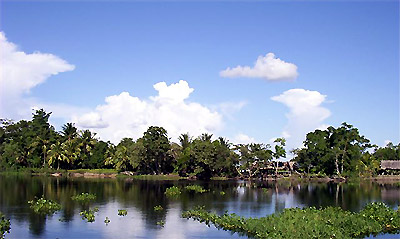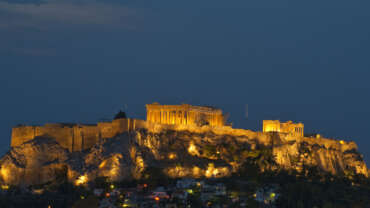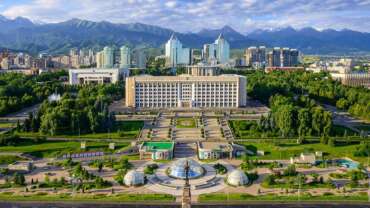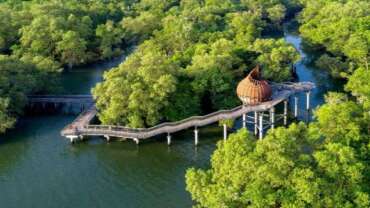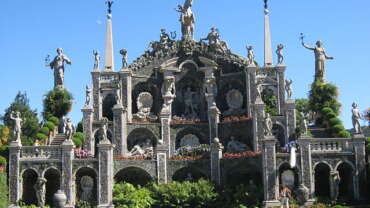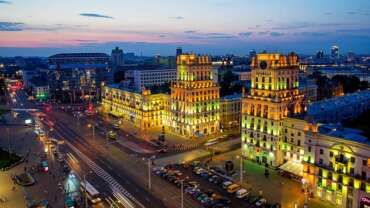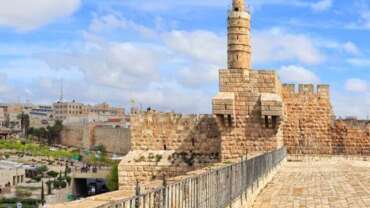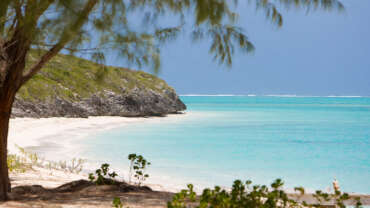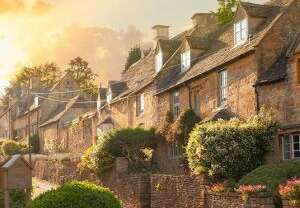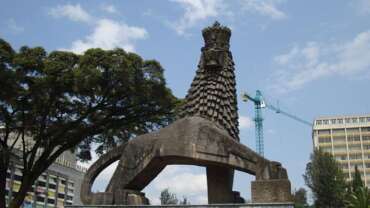Welcome to Venezuela!
Venezuela is a country on the northern coast of South America with diverse natural attractions. Along its Caribbean coast are tropical resort islands including Isla de Margarita and the Los Roques archipelago. To the northwest are the Andes Mountains and the colonial town of Mérida, a base for visiting Sierra Nevada National Park. Caracas, the capital, is to the north.
History of Venezuela
The earliest inhabitants of Venezuela were food-gathering Indians who arrived in the Upper Paleolithic Period. Arawak and Carib Indians were prominent among the groups that arrived later. Nomadic hunting and fishing groups roamed the Lake Maracaibo basin, the Llanos, and the coast. The most technologically advanced Venezuelan Indians lived in farming communities in the Andes.
The colonial era
Christopher Columbus arrived in what is now Venezuela in 1498, during his third voyage to the New World. European explorers named the region Venezuela (“Little Venice”) after observing local Indian houses on stilts over water. During the first quarter-century of contact, the Europeans limited themselves to slave hunting and pearl fishing on the northeastern coast; the first permanent Spanish settlement, Cumaná, was not made until 1523. In the second quarter of the 16th century, the centre of activity shifted to the northwestern coast, where the Welser banking house of Augsburg, Germany, purchased exploration and colonization rights. The Germans failed to find precious metals and to occupy the area permanently, however, and Spain repossessed the zone in 1546. Legends of El Dorado (“The Golden One”) drove explorers into the Venezuelan interior, perhaps including the Spanish adventurer and renegade Lope de Aguirre, who is said to have attacked several villages there. The Englishman Sir Walter Raleigh sailed up the Orinoco River in search of the fabled city of gold reportedly ruled by El Dorado. Raleigh described his adventure in The Discoverie of Guiana (1596).
In the latter half of the 16th century, Spanish agriculturalists began to colonize the region by using encomiendas (semifeudal grants of land and Indian labourers). Caracas was founded in 1567, and by 1600 more than 20 settlements dotted the Venezuelan Andes and the Caribbean coast. During the 17th and 18th centuries, various Roman Catholic missionary orders gradually took over the Llanos and Maracaibo regions.
The colonial economy was based on agriculture and stock raising. Corn (maize), beans, and beef were the domestic food staples; sugar, cacao, tobacco, and hides were the principal exports. Spain’s European rivals (initially the French and English, followed by the Dutch) succeeded in taking over most of Venezuela’s commerce until the early 18th century, when Spain established a monopoly trading company. The interests of the latter, however, proved contrary to those of Venezuelan producers, who forced dissolution of the company during the 1780s.
Venezuelan society during the colonial era was headed by agents of the Spanish crown. Royal bureaucrats monopolized the top governing posts, and Spanish clergymen dominated the high church offices. However, Creoles (white descendents of Europeans born in the Americas) owned the land and other forms of wealth, and they used their power to hold the nonwhite races in bondage: mestizos (persons of mixed European and Indian ancestry) and mulattoes (of European and African ancestry) were generally without property, social status, or political influence; Indians performed forced labour on interior farms or were segregated on marginal lands; and black Africans were slaves on the coastal plantations. In theory, Venezuela was governed by the Spanish crown through the Audiencia of Santo Domingo in the 16th and 17th centuries and through the Viceroyalty of New Granada (at Bogotá) from its incorporation in 1717. In practice, however, the Venezuelans exercised some regional autonomy during the colonial era.
The independence movement
A group of Venezuelan Creoles boldly proclaimed their country an independent republic in 1797. Although their effort failed, it forewarned of the revolutionary movements that were soon to inflame Latin America.
In 1806 Francisco de Miranda—who had earlier fought under George Washington against the British, served as a general in the French Revolution, and fought with the French against Prussia and Russia—tried unsuccessfully to land on the Venezuelan coast with a group of mercenaries whom he had recruited in New York City. Revolutionary leaders recalled him to Gran Colombia four years later to take charge of a ruling junta, which drafted a constitution and established an independent nation. In the ensuing war with royalist forces, however, Miranda signed an armistice with Spain. Other revolutionary leaders viewed this action with contempt, and Miranda was subsequently turned over to the Spaniards, who sent him first to Puerto Rico and later to Spain, where he died in prison in 1816.
Early in 1813 the revolutionary junta appointed Simón Bolívar commander of the Venezuelan forces. Bolívar, a wealthy Creole landowner born in Caracas in 1783, had many reverses in his war against the Spanish. His forces were opposed by large royalist armies including a cavalry unit of llaneros (cowboys of the Llanos frontier), who were under the command of José Tomás Boves. In 1815 the Spanish general Pablo Morillo landed with an expeditionary force that spearheaded the reconquest of much of New Granada. Morillo administered the region in a heavy-handed fashion, however, and many of the Creole elites who had initially supported him soon conspired for his defeat. Llaneros and blacks also deserted the royalist cause and joined Bolívar, whose army was further augmented by a legion of British and Irish mercenaries; the new republican government of Haiti also sent aid. The Republic of Gran Colombia, with its capital at Bogotá, was proclaimed on December 17, 1819, with Bolívar as president. On June 24, 1821, Bolívar’s troops, reinforced by llanero cavalry under General José Antonio Páez, defeated the main royalist army at the Battle of Carabobo. The last of the royalist forces surrendered at Puerto Cabello on October 9, 1823. The following year Bolívar’s army marched south to liberate Peru, and in 1825 it freed Upper Peru (Bolivia) from Spanish rule. Venezuelans suffered greater casualties and endured more privations during the wars than did any other Latin American national group, because of the ferocity of battles on their own soil and the large number of Venezuelan troops who carried the struggle to other regions.
People of Venezuela
Immigration and ethnic composition
Venezuela is a country of immigrants. About two-thirds of the population is mestizo (of mixed European and Indian ancestry) or mulatto-mestizo (African, European, and Indian); about one-fifth of Venezuelans are of European lineage, and one-tenth have mainly African ancestry. The native Indian population is statistically small.
Prior to 1948 Venezuela had never openly encouraged non-Hispanic immigration, except for selective influxes of merchants, sailors, and entrepreneurs from neighbouring West Indian islands. As the petroleum industry grew, however, the government attempted to attract a wider range of people. During a 10-year period of open immigration (1948–58), Venezuela recruited agricultural and skilled workers from Spain, Italy, and Portugal; at the same time migration from Colombia to Venezuela also increased. Approximately one million immigrants entered the country during that time, although many of them eventually returned home. After 1958 the government tightened immigration controls to favour foreigners with high-level skills, yet during the 1960s Colombian labourers continued to move into the rural sector as replacements for Venezuelans who were leaving farms for the cities.
The government again shifted immigration policies in response to the mid-1970s petroleum boom, because there was a large demand for semiskilled and skilled labour in all sectors of the economy. At the same time, professional and technical workers and their families were leaving Argentina, Chile, and Uruguay because of political instability and persecution there, and many of them relocated to Venezuela. After 1976 the government again tightened its controls on immigration from other South American countries, instead favouring professionals from the United States, Italy, Spain, and Portugal. Throughout that period of relative prosperity and economic expansion, the volume of illegal immigration (mainly unskilled workers and their families) matched that of legal entry. Most illegal immigrants came from Colombia, with smaller numbers arriving from Brazil and other neighbouring countries. Prior to the extended economic downturn of the 1980s, as many as 1.5 million undocumented Colombians resided in Venezuela, and more than a decade later hundreds of thousands remained. The influx of foreigners generated xenophobic sentiments in the late 1980s.
Ethnic groups are commonly identified with particular regions. Venezuelans of largely European and mestizo ancestry are concentrated in the major cities of the north. Peoples of African ancestry and mulatto-mestizo groups predominate along the Caribbean coast. Many mestizos from the highlands are physically distinct from those of the lowlands because of the different levels of intermarriage between Hispanic and Indian populations in the two regions. The Indian minorities survive mainly in the sparsely inhabited interior—three-fifths live in Zulia state (primarily in the forests near Lake Maracaibo), one-seventh inhabit Amazonas state in the far south, and smaller numbers live in such remote areas as the Guiana Highlands and the Orinoco delta region in the east. According to government estimates, there are some 38 distinct Indian peoples within Venezuelan territory. The Goajiro (Wayuu) are the largest indigenous group, followed by the Warao (Warrau).
Demographic trends
Venezuela’s 20th-century population growth was among the most rapid in Latin America, averaging nearly 3 percent annually during the period 1970–95. This increase was prompted by high birth rates, declines in mortality rates, and successive waves of immigration. The population growth rate has declined significantly, however, since the early 1990s. After World War II Venezuela’s mortality rate began to drop as advances in medicine and technology combated malaria, yellow fever, and other ailments; in addition, hygiene and diet were improved, and housing conditions were upgraded. While birth rates remained at high levels, mortality rates, which had been as high as 30 per thousand before 1920, dropped below 10 per thousand by the 1960s. Since that time the mortality rate has stabilized, and demographic changes have been mostly influenced by immigration rates and by reductions in fertility levels, which nevertheless have remained relatively high. Between one-half and three-fifths of the population is under 30 years of age. Life expectancy rates have also been rising, a trend contributing to rapid population growth.
Languages
The Indian groups speak more than 25 different languages, most of which belong to three linguistic families—Cariban, Arawak, and Chibcha. Spanish is the national language of the majority. Local idioms, colloquial phrases, and simplified verb usage distinguish Venezuelan Spanish from other Latin American and Iberian variants. In Caracas and other major commercial centres, English is often favoured in business communications, and private schools in Caracas encourage bilingualism. The presence of English-speaking professionals in the oil centres and in the major cities has made English the country’s most popular second language.
Religion
Freedom of religion in Venezuela is guaranteed by the constitution, although the vast majority of the people are at least nominally adherents of Roman Catholicism. Religious tolerance is generally observed. Various Protestant sects form the largest minority group, and there are small groups of Jews and Muslims. Some Indian peoples continue to practice their traditional religions, but many have converted to Catholicism, especially those in settlements clustered around riverside mission stations. The Roman Catholic church is officially apolitical, but many priests and bishops have become involved in political events, some by espousing liberation theology and agitating for socioeconomic reforms, and others by reacting against liberal or radical government policies.
Cultural Life of Venezuela
Daily life
As Venezuelans moved from the countryside to the cities, they developed a modern urban lifestyle; large middle-class neighbourhoods developed alongside burgeoning poor ranchos. Many middle- and upper-class Venezuelans acquired wealth from oil in the 1950s–70s, which enabled them to travel easily, especially to the United States, and to own cars and houses. The economic downturn since the 1980s has interrupted that easy lifestyle, however, and poverty has grown.
In Venezuela the admixture of African, European, and Indian cultural traditions is often called criollo (Creole), although that term in most Latin American contexts denotes people of European ancestry. Venezuelans boast criollo foods, dances, and, especially, music. National foods include arepa (a cornmeal bread) and hallaca (sweet cornmeal dough cooked in banana leaves). Other typical foods include passion fruit and tamarinds, tequeños (cheese pastries), pabellón (a stew of beef, rice, and black beans served over fried plantains), and pulpo (octopus) cooked in citrus juice. During the pre-Lenten Carnival more elaborate dishes are served, such as paella and talcari de chivo (“kid stew”). Locally produced beer and rum are popular, as is coffee served in many different styles, each with its own name reflecting the amount of milk added to the coffee.
Although North American music is popular and widespread in Venezuela, the Caribbean salsa and merengue forms are also commonly heard. The national Venezuelan folk dance and musical style is the joropa, but each region of the country has its own distinctive musical expression. (See also Native American arts: Northern South America.)
The arts
Since the 1920s the government has promoted artistic expression as a way to maintain cultural autonomy in the face of foreign influences. As greater freedom for writing and publishing was granted, a flourishing national literature emerged. Rómulo Gallegos, who became Venezuela’s best-known writer, was part of this nationalistic wave, gaining international recognition for his novel Doña Bárbara (1929). Such painters as Armando Reverón and Manuel Cabré also expressed nationalistic fervour. The architect Carlos Raúl Villanueva won international acclaim for his design of the Central University in Caracas, which featured asymmetrically arranged buildings complemented by freestanding murals and sculpture.
The state-supported Venezuelan Symphony Orchestra is highly popular, and its repertoire also reflects a spirit of nationalism. Also of great pride is the Simón Bolívar Youth Orchestra in Caracas, which boasts some of the country’s best young musicians. Some of these musicians are recruited from a comprehensive orchestral training and music education program known in Venezuela as El Sistema (“The System”). The program, which was created in the 1970s, offers hundreds of thousands of children from underprivileged and at-risk communities the opportunity to play in youth orchestras throughout the country, and each state in Venezuela has at least one professional youth orchestra.
Cultural institutions
Most of Venezuela’s major cultural institutions are located in Caracas. The Museum of Fine Arts (founded in 1938) houses a large collection of paintings and sculptures by both Venezuelan and foreign artists. Other museums include the Museum of Colonial Art, housed in an 18th-century mansion, and the Science Museum Foundation (founded in 1875 as the National Museum), which contains exhibits on archaeology, anthropology, and other disciplines. Among the noteworthy museums outside Caracas are a museum of pre-Columbian artifacts in Ciudad Bolívar and the Museum of Military History in Maracaibo. The most important book collections are at the National Library (1883) in Caracas, which holds more than two million volumes, including many rare books. The modern Teresa Carreño Theatre provides a forum for international and national music and dance performances.
National Parks in Venezuela
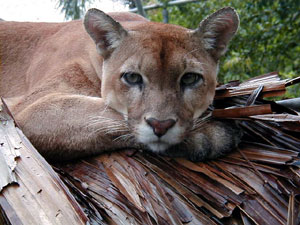
The Swiss biologist Henri Pittier was the first to point out the ecological problems in Venezuela and the necessity to protect the country’s ecosystems. Thanks to his pioneering efforts, the national park system was born. In 1935, the mountainous land along the northern coast owned by the dictator Gómez became available after his death and was used to found Venezuela’s first national park. Originally Rancho Grande, the park has been known as the Parque Nacional Henri Pittier since 1953. Today, Venezuela has 43 national parks.



